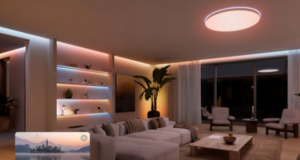
The number of windows in your home and where you put them is restricted by rules designed to ensure a minimum amount of daylight in each part of a home. Find out how this is likely to affect your design.

To some extent, daylighting is now a requirement for new buildings. The Building Code of Australia (BCA) states that ‘habitable rooms’ require permanent access to fresh air and natural light, most commonly in the form of windows. This access must come through windows of a size not less that 10% of floor areas, or through rooflights (i.e. skylights) not less than 3% of the floor space of a given area. You can also use a proportional combination of windows and rooflights to satisfy the requirements.
Sick building syndrome
The primary reason for this is to help prevent ‘sick building syndrome’ – a phenomenon that has been the subject of much discussion in recent years.
Sick building syndrome is largely related to air quality and indoor pollution, but also takes into account the availability of natural light, which studies show is vital for people’s health and wellbeing. The health effects of natural light and fresh air offered by windows are pivotal to the health of a home and its inhabitants.
Effects of a lack of daylight
A lot of the research that relates to the health benefits of natural light relates to night shift workers in particular, because they are working in an environment without natural light, which suppresses their serotonin levels (which affects their happiness), and melatonin levels (which affects their sleeping and relaxation). A lack of exposure to natural light can even lead to seasonal affective disorder, or the ‘winter blues’, which can then lead to clinical depression.





